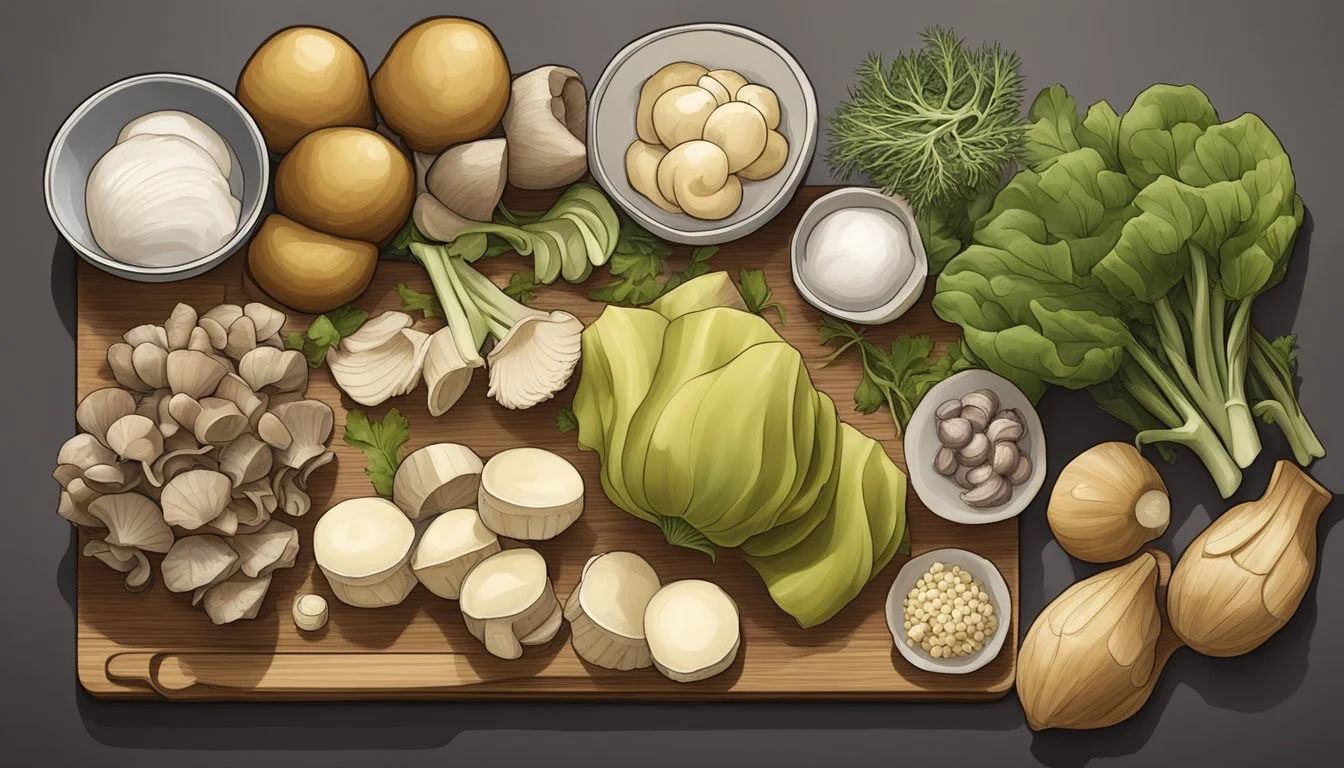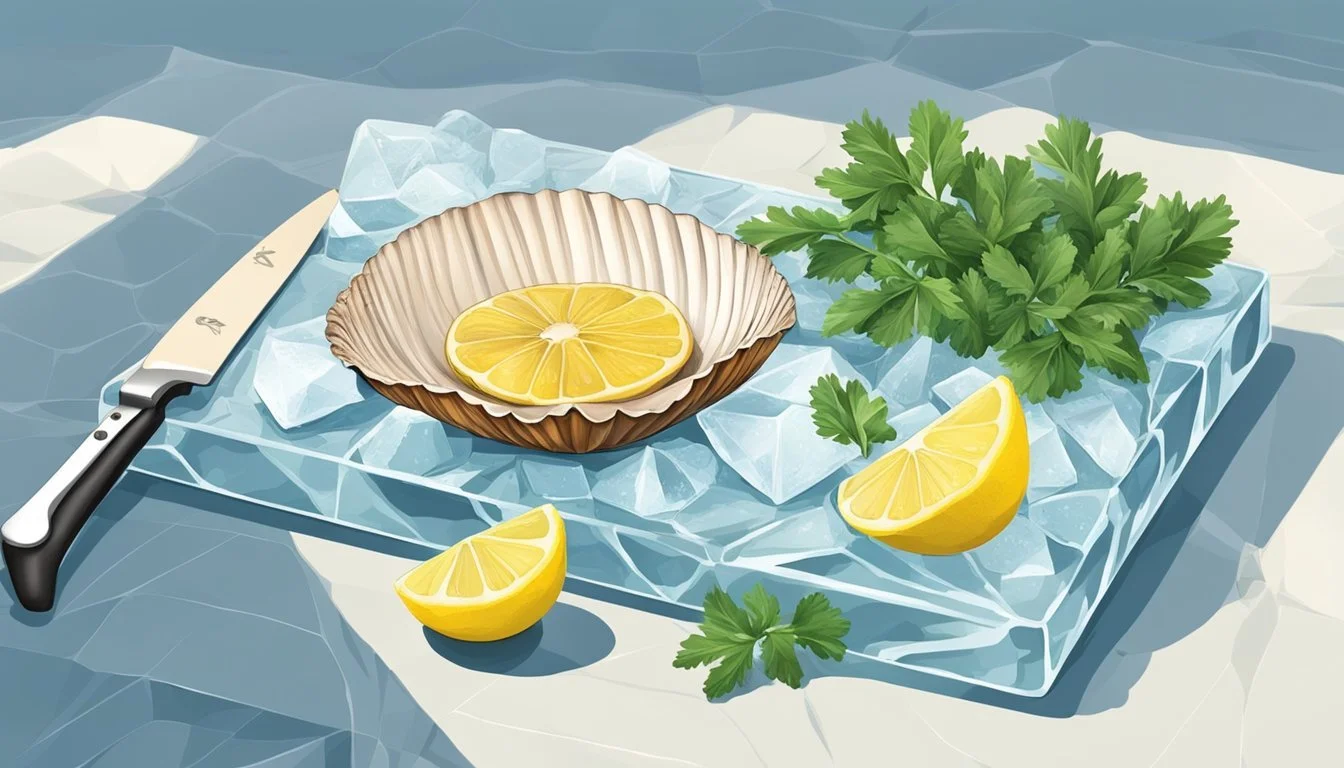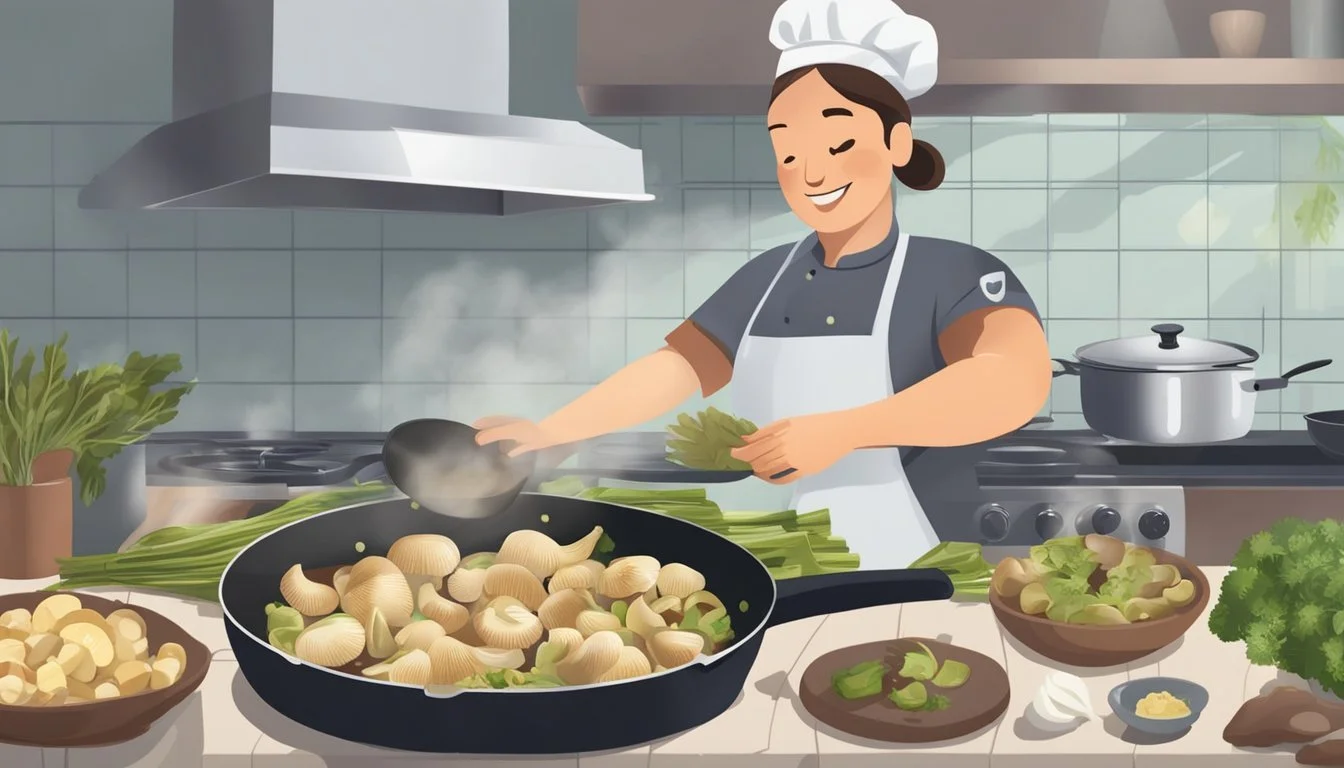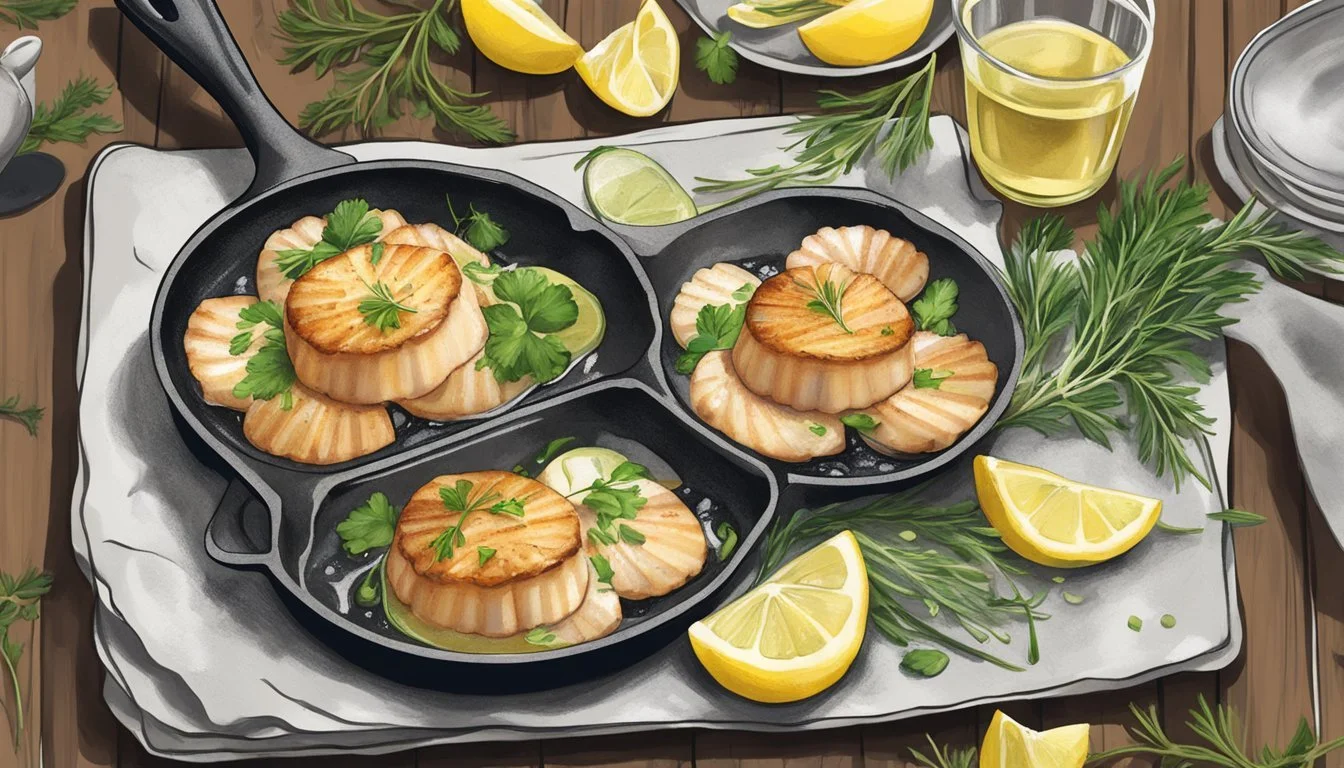Scallops Substitutes
Best Alternatives for Your Recipes
For those who love seafood but need alternatives to scallops, there are numerous substitutes that can provide similar flavors and textures. Mushrooms offer a versatile and low-calorie option, imparting a rich umami flavor that complements many dishes. For those seeking plant-based choices, chickpeas deliver both nutritional benefits and a satisfying texture, making them a viable substitute in various recipes.
Another potential substitute is seafood such as clams, mussels, shrimp, and crab, which can closely replicate the taste and consistency of scallops. These options are especially useful for individuals with dietary restrictions or preferences that preclude the use of scallops.
Using sustainable seafood choices is crucial, as it reduces the environmental impact and promotes healthier ocean ecosystems. Selecting substitutes that align with these values not only benefits personal health but also supports global sustainability efforts.
Understanding Scallops
Scallops are a versatile seafood ingredient that are notable for their rich nutritional profile and varied culinary applications. They are prized for both their flavor and health benefits, making them a popular choice in many cuisines.
Nutritional Profile
Scallops offer a wealth of nutrients important for health. They are low in calories, with a 3-ounce serving typically providing around 90 calories. They are also an excellent source of protein, providing about 17 grams per serving.
They contain omega-3 fatty acids, beneficial for heart health. Scallops boast essential vitamins and minerals, including vitamin B12, vitamin A, and iron. Additionally, they provide potassium, which helps with muscle function, and sodium, though usually in moderate amounts. They also have calcium and vitamin C in smaller quantities, contributing to overall nutritional balance.
Culinary Uses
Scallops are highly valued in cooking for their sweet, delicate flavor and tender texture. Commonly, they are pan-seared, creating a caramelized crust while keeping the interior moist. This method enhances their natural sweetness.
They can also be grilled, broiled, or incorporated into dishes such as pasta and risottos. Scallops are often used in soups and stews, adding a subtle seafood essence to the dish. Their versatility allows them to pair well with various ingredients, from simple butter sauces to complex spice blends. Whether as a main course or a complement to other seafood, scallops elevate the culinary experience with their delightful taste and texture.
The Need for Scallops Substitutes
Scallops are a popular seafood choice, but various factors may prompt individuals to seek alternatives. These include dietary restrictions, allergies, and environmental concerns.
Dietary Restrictions
Many people following vegetarian or vegan diets look for plant-based alternatives to scallops. Chickpeas and mushrooms are common choices due to their distinct textures and nutritional benefits. For instance, chickpeas are rich in fiber, which promotes weight management. Mushrooms, on the other hand, provide numerous B vitamins and are low in calories, making them suitable for various dietary plans.
Allergies and Intolerances
Shellfish allergies are among the most common, leading many to seek substitutes for scallops in their meals. Symptoms can range from mild itching to severe anaphylaxis, so finding safe alternatives is crucial. Substitutes such as clams, mussels, and oysters can work well, depending on the individual's tolerance to different seafood varieties. For those avoiding all seafood, vegetable-based options like fermented bean paste can be used to replicate the umami flavor of scallops.
Environmental Considerations
The environmental impact of scallop farming and harvesting drives some to look for more sustainable options. Overfishing and habitat destruction are significant concerns. Alternatives like kelp mixed with nutritional yeast create a vegan scallop substitute that mimics the briny taste of seafood without the negative environmental effects. Moreover, clams and mussels tend to have a lower environmental footprint compared to other seafood, making them preferable choices for eco-conscious consumers.
Popular Scallops Substitutes
Cooking with alternatives to scallops can still deliver delicious results. Various options cater to different dietary preferences, including mushrooms, other seafood, and plant-based ingredients.
Mushroom-Based Substitutes
King oyster mushrooms and other mushroom scallops are notable for their adaptable texture and flavor. When prepared correctly, king oyster mushrooms can mimic the scallop's slightly chewy and tender bite.
To achieve this, the mushrooms are typically sliced into rounds and cooked in a way that provides a similar tenderness and moisture. Their taste is delicate, making them versatile in various recipes, from pasta dishes to sautés. This method is popular among those seeking a vegan alternative with the appearance and texture of scallops.
Seafood Alternatives
Several types of seafood can replace scallops due to their comparable textures and flavors. Shrimp and dried shrimp offer a similar sweetness and firm consistency, making them ideal for dishes that require a seafood base.
Other firm white fish, such as cod and halibut, can also serve as substitutes. Cod’s mild flavor and halibut’s meaty texture can be prepared in ways akin to scallops, providing a satisfying culinary experience. Clams are another viable option, sharing a similar tender and slightly chewy texture to scallops.
Plant-Based and Vegan Options
For a plant-based or vegan alternative, chickpeas and other legumes can be creatively used. Chickpeas' firm yet soft texture makes them suitable for dishes requiring a hearty bite. They are rich in fiber and offer nutritional benefits, making them a healthful choice.
Another innovative approach is using various nuts, such as cashews, which when soaked and appropriately seasoned, can replicate the creamy, slightly sweet flavor of scallops. These options cater to those who prefer avoiding animal products altogether without compromising taste and texture in their meals.
Choosing the right substitute depends on dietary needs and the specific recipe, but each option provides a unique twist while closely mimicking the qualities of scallops.
Preparation and Cooking Techniques
When preparing scallop substitutes, marinating and seasoning play essential roles in enhancing flavor. Effective cooking methods ensure the desired texture and taste, whether grilling, frying, or using a cast-iron skillet.
Marinating and Seasoning
Marinating is a critical step to infuse substitutes like mushrooms or tofu with rich flavors. Common marinades include a mixture of soy sauce, miso, olive oil, and lemon juice. For instance, a combination of olive oil, garlic clove, soy sauce, and lemon juice can elevate the flavors if marinated for at least 30 minutes.
Herbs and spices such as garlic powder, paprika, and black pepper can further enhance the taste. Seasoning substitutes with a tamari-based mixture can work well. Refrigeration during marinating helps maintain freshness. Never skip the marinating time as it ensures the substitutes absorb all the flavors thoroughly.
Cooking Methods
Grilling, frying, and using a cast-iron skillet are recommended methods for achieving the right texture. Grilling involves preheating the grill and cooking the substitutes for 3-4 minutes per side. Applying garlic butter during the process can add depth to the flavor.
Frying in a cast-iron skillet with a small amount of oil, preferably olive oil, ensures even cooking. Heat the skillet before placing the substitutes and cook for about 2-3 minutes per side, allowing a golden crust to form. For a healthier option, consider baking at 375°F for 10-15 minutes.
Adjusting these techniques based on the specific substitute ensures an optimal eating experience that closely mirrors the taste and texture of scallops.
Incorporating Substitutes into Recipes
Different substitutes can be used for scallops in various recipes, providing similar texture and flavor while catering to dietary preferences. Selecting the right alternative depends on the dish being prepared, whether it's a side or appetizer, main course, salad, or pasta.
Sides and Appetizers
For sides and appetizers, options like mushrooms or shrimp work well. Mushrooms, such as king oyster mushrooms, can replicate the look and feel of scallops when sliced and seared. This makes them a favorite choice for vegan and vegetarian dishes.
Shrimp provides a similar savory flavor and can be cooked in various ways, including broiling or grilling. They are versatile enough to be paired with sauces and dips, much like scallops.
Example Recipe:
Seared Mushrooms with Garlic Sauce:
Sear sliced king oyster mushrooms.
Prepare a garlic sauce with olive oil, minced garlic, and lemon juice.
Serve the mushrooms drizzled with the sauce, garnished with chopped parsley.
Main Courses
Main courses often demand substitutes that can hold up to more complex flavors and textures. Options like lobster, clams, and squid are robust enough to shine in elaborate dishes. Lobster and clams can be perfect for rich, creamy recipes.
Squid offers a chewy texture that pairs excellently with spices and sauces. Each substitute should be cooked appropriately to maintain the intended flavor profile.
Example Recipe:
Lobster Risotto:
Sauté onions and garlic in butter.
Add Arborio rice and cook until translucent.
Gradually incorporate seafood broth, stirring until creamy.
Fold in cooked lobster chunks and finish with Parmesan cheese and lemon zest.
Salads and Pastas
Salads and pasta dishes benefit from substitutes like chickpeas and vegan scallops. Chickpeas are high in fiber and protein, making them a nutritious addition to salads. Their mild flavor allows them to absorb dressings well.
For vegan pasta, mushrooms treated with a marinade can mimic the texture of scallops, adding a savory note. This is ideal for gluten-free or plant-based diet enthusiasts.
Example Recipe:
Chickpea Salad:
Mix canned, drained chickpeas with diced cucumbers, tomatoes, and red onions.
Dress with olive oil, lemon juice, salt, and pepper.
Garnish with chopped fresh herbs like dill or parsley.
Vegan Scallop Pasta:
Marinate thick mushroom slices in a mixture of soy sauce, garlic, and lemon juice.
Sauté mushrooms until golden.
Toss with cooked pasta, olive oil, a splash of white wine, and fresh herbs.
Nutritional Considerations
When considering substitutes for scallops, it's important to analyze their nutritional content, including macronutrients and minerals, as well as how diet-friendly they are.
Macronutrients and Minerals
Scallops are notable for their high protein content and low fat levels. Each serving of scallops contains approximately 137 calories, 24 grams of protein, and 1 gram of fat. They are also low in carbohydrates, providing around 6.3 grams per serving. Scallops offer significant amounts of essential minerals such as selenium and magnesium.
When choosing substitutes, clams and mussels are excellent options with comparable nutrient profiles. Clams, for instance, are rich in iron, vitamin B12, and protein. Mussels provide omega-3 fatty acids and potassium. These shellfish maintain a similar balance of low fat and high protein, making them nutritionally similar to scallops.
Another alternative, nutritional yeast, does not mimic the texture of scallops but can serve as a flavor enhancer. It supplies about 60 calories per 2 tablespoons, 8 grams of protein, and essential minerals such as zinc and B-vitamins. While it doesn't provide the same amount of omega-3 fatty acids or selenium, it does add other nutrients to meals.
Diet-Friendly Options
For those on specific diets, it's essential to find scallop substitutes that align with dietary restrictions. Vegan options include mushrooms, specifically king oyster mushrooms, which can be prepared to resemble the texture of scallops. They are low in calories and offer dietary fiber and potassium.
For individuals monitoring fat intake, choosing substitutes like tofu or seitan can be beneficial. Tofu offers a lean protein source with minimal fat content, while seitan is high in protein and low in fat, making it suitable for low-fat diets.
Alternative protein-rich options include chicken breast and white fish like cod or haddock. These options provide a good amount of protein with relatively low calories and fat content. Chicken breast offers around 165 calories per 3 ounces, with 31 grams of protein and 3.6 grams of fat, making it a versatile and diet-friendly choice.
By carefully selecting substitutes, one can maintain balanced nutrition without compromising on dietary goals.
Flavor Pairings and Enhancements
For those looking to substitute scallops but still want to enjoy similar culinary experiences, certain herbs, spices, and sauces can brilliantly elevate their flavor. The right combinations can bring out the umami notes, balance sweetness, and add depth.
Herbs and Spices
Garlic and pepper are essential herbs that pair well with scallop substitutes. Whether using black pepper or white pepper, it offers a subtle heat that accentuates the umami in the dish.
Thyme and parsley are also excellent choices. Thyme adds earthy undertones, while parsley offers a fresh garnish that brightens the meal.
Season the substitutes with salt and high-quality seasoning to bring out their natural flavors. For a robust umami flavor, consider garlic and miso paste; these provide depth and richness, making the substitutes as delightful as scallops.
Sauces and Glazes
White wine sauces can add a touch of acidity and sweetness, complementing the substitute's flavor profile. This works exceptionally well with seafood alternatives like shrimp or lobster.
A garlic butter sauce, possibly with vegan butter for a plant-based option, can be rich and creamy, enhancing the umami flavors of substitutes such as mushrooms or chickpeas.
For a vegan twist, mix kelp stock with a bit of soy sauce to mimic the brininess of scallops. These combinations can transform any substitute into a savory delight, ensuring a satisfying culinary experience.
Sustainable and Ethical Considerations
Sustainability is a critical factor when choosing scallop substitutes. Farmed seafood, including sea scallops and bay scallops, often raises concerns about environmental impact. Overfishing and habitat damage are prominent issues in conventional scallop farming.
Sustainable alternatives play a significant role in reducing these environmental impacts. Plant-based substitutes are gaining popularity for their minimal ecological footprint. Ingredients such as king oyster mushrooms and hearts of palm can replicate the texture and taste of scallops while being more ecologically friendly.
Ethical considerations also come into play when choosing substitutions. Vegan substitutes, like those made from nata de coco or konjac root, cater to individuals who avoid animal products for ethical reasons. These options are designed to mimic the taste and essence of scallops without the associated animal welfare concerns.
Examples of Ethical and Sustainable Scallop Substitutes
King Oyster Mushrooms: Low environmental impact, rich in umami flavor.
Hearts of Palm: Sustainably harvested, provides a similar texture to scallops.
Nata de Coco: Vegan-friendly, offers a chewy texture.
Konjac Root: Low-calorie, plant-based, ethical option.
Availability is another important factor. These substitutes are increasingly found in gourmet stores and online retailers, making it easier for consumers to make sustainable choices. By choosing these more sustainable and ethical options, consumers can enjoy their favorite dishes without compromising their values or the environment.
Global Influence and Regional Varieties
Scallop substitutes vary widely around the world, reflecting both regional culinary preferences and availability of ingredients. In Asian cuisine, plant-based options and seafood alternatives are popular, while Western cuisine leans toward other shellfish and imaginative vegan options.
Asia-Inspired Substitutes
King Oyster Mushrooms: In Japan and China, king oyster mushrooms are a well-loved substitute for scallops. Their meaty texture and ability to absorb flavors make them ideal for soups, stir-fries, and even sushi. These mushrooms mimic the chewiness of sea scallops, providing a similar eating experience.
Vegetarian Seafood: Various types of processed vegan seafood products are becoming popular in Asia. These plant-based alternatives, often made from soy or konjac, are crafted to replicate the taste and texture of scallops. These substitutes are commonly found in ready-to-cook meals and restaurant dishes.
Western Alternatives
Shellfish: Clams, mussels, and oysters are commonly used as scallop substitutes in Western cuisine. They can be cooked in similar ways, such as grilling or sautéing, and can be used in appetizers, pastas, and stews. Although they differ slightly in flavor, they provide a comparable seafood experience.
Nutritional Yeast: For a vegan and umami-packed substitute, nutritional yeast can be utilized in Western dishes. Although it doesn't mimic the texture, its nutty and savory flavor makes it a versatile ingredient for sauces, soups, and dressings. This option caters to those steering clear of animal products altogether.











